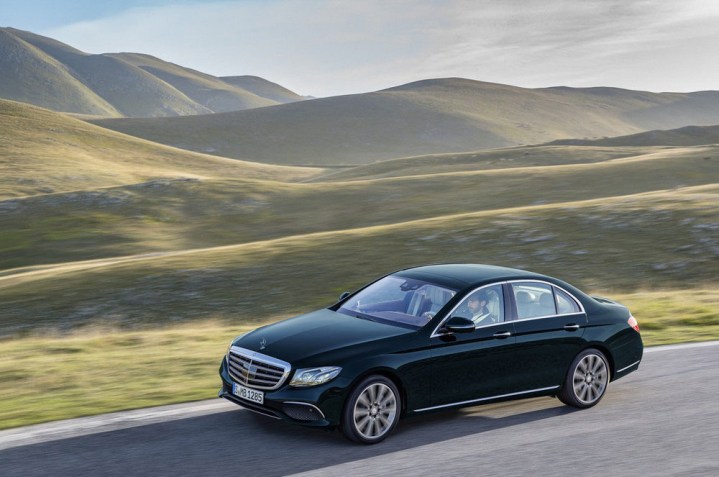
Most cars applying for autonomous driver’s licenses are specially-built prototypes, but during CES 2016 Mercedes-Benz announced that one of its production models is now licensed to drive itself on Nevada roads. That car is the next-generation E-Class, which will be unveiled next week at the 2016 Detroit Auto Show, and is expected to go on sale later this year as a 2017 model.
Mercedes says the E-Class is the first production car to be granted one of these Nevada licenses. Unlike other automakers’ test cars, which are extensively modified with additional sensors and hardware, Mercedes says the E-Class already has enough built-in features to perform at least some autonomous driving. However, the cars Mercedes plans to test in the Silver State won’t be identical to the ones offered to customers. They’ll get “some smaller software modifications” to their control units.
Cars also aren’t allowed on Nevada roads unescorted. A human driver must be behind the wheel at all times, along with a second passenger. Self-driving cars are only allowed on highways, and certain maneuvers must be done by human drivers. The test cars are marked by red license plates.
The E-Class is expected to have more extensive autonomous-driving features than almost any other production car. Mercedes previously said it will be able to follow other cars at speeds up to 124 mph, with completely automated acceleration and braking, plus some “steering assistance.” It will also be able to brake ad steer itself automatically in emergencies, depending on the circumstances.
Mercedes also plans to offer a “Remote Parking Pilot” that lets the driver maneuver the car into a space using a smartphone app, after disembarking. This feature won’t be offered in the U.S. at launch, though.
Editors' Recommendations
- 2025 Mercedes-Benz EQS sedan gets new face, bigger battery
- 2024 Mercedes-AMG S63 E Performance first drive review: high-performance plug-in
- Mercedes-Benz GLC-Class takes a subtle approach to tech
- Mercedes-Benz is getting immersive audio thanks to Dolby Atmos
- 2021 Mercedes-Benz S-Class first drive review: Titan of tech


